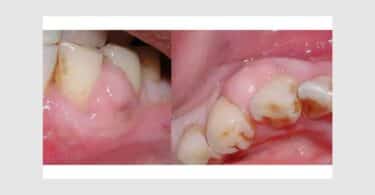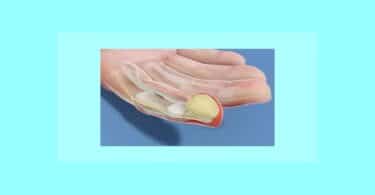Erysipelas is a contagious infection of the skin and subcutaneous infection of the skin and subcutaneous tissue is usually caused by group A streptococci. It is marked by rapid-spreading redness and swelling. Which is believed to enter the skin through a small lesion. While this disease is contagious, it does not produce epidermis such as those of scarlet fever. Erysipelas may affect both children and adults. The legs are affected in up to 80 percent of cases. The face accounts for up to 20 percent of infections.
Clinical presentation
Patients with erysipelas present with well-demarcated skin lesions with spreading edges that advance at a rate of 2 to 10 cm per day. Erysipelas is most common on the lower extremities but may also involve the face, upper extremities, and trunk. This disease tends preferentially to afflict the very young and elderly.
Causes of erysipelas
Infection of bacteria, or, rarely, a fungal infection. It can begin with a minor injury to the skin that is invaded by the bacteria. the infection leads to inflammation, which is the body’s response to infection. Cellulitis cannot be passed from one person to another.
Risk factors involved:
- Chronic illness, such as diabetes
- Any injury that breaks the skin
- Weak immune system due to illness or drugs
- Use of drugs by injection
- Burns
- Surgical wounds infection
- Skin disorders (eczema or psoriasis) or infections that causes skin symptoms, such as chickenpox.
- Poor blood circulation.
Diagnosis of erysipelas
Characteristic skin disease usually suggests the diagnosis. Swabs for gram stain and culture from suspected portal of entry may be helpful but not are usually not necessary. Skin biopsy for tissue culture and the injection-respiration method of tissue fluid collection both yield poor results and have little diagnostic value. Blood cultures are positive in only 5% patients. Routine lab tests are usually unraveling, but some patients will have leukocytosis.
Homeopathic treatment of erysipelas
Homeopathy is one of the most popular holistic systems of medicine. The selection of remedy is based upon the theory of individualization and symptoms similarity by using holistic approach. This is the only way through which a state of complete health can be regained by removing all the sign and symptoms from which the patient is suffering. The aim of homeopathy is not only to treat erysipelas but to address its underlying cause and individual susceptibility. As far as therapeutic medication is concerned, several remedies are available to treat erysipelas that can be selected on the basis of cause, sensations and modalities of the complaints. For individualized remedy selection and treatment, the patient should consult a qualified homeopathic doctor in person. There are following remedies which are helpful in the treatment of erysipelas:
Ammonium carb – erysipelas of old people, when cerebral symptoms are developed, while eruptions are still out; debility and soreness of whole body.
Apis Mel – oedematous erysipelas of the face, traveling from right to left; eruptions, which may have a purplish hue, stinging, burning, pricking, sensitive to the slightest touch; high fever with dry skin and thirst or thirstlessness; traumatic erysipelas; chronic erysipelas, recurring periodically; phlegmonous erysipelas. The erysipelas of this remedy is of a rosy pink hue at first, later becoming livid and purple as the oedema which is characteristic of the drug appears. The oedema appears quickly and the parts feel sore and bruised. It is especially indicated where the disease spreads from a hard centre. Bojanus recommended it in traumatic erysipelas. Umbilical erysipelas in children, stinging pains, urine suppressed and no thirst. There is a tendency for the Apis erysipelas to extend into the tissues, but the remedy requires the pressure of oedema to be well indicated.
Arsenic album – sudden attacks of erysipelas with prostration, restlessness and burning pain; Intense thirst for small quantities of water at short intervals; the disease shifts from one part to another; Oedema, vomiting and diarrhea.
Belladonna – Belladonna is perhaps more frequently indicated in commencing erysipelas than any other remedy and it is often specific. True, Aconite should rather be the remedy,but the Aconite stage is passed when the physician is called, for this remedy corresponds only to the marked febrile symptoms of asthenic cases. The erysipelas corresponding to Belladonna is of the smooth variety; the skin is shining and tense and dark red or bright red, the swelling is rapid and there are sharp, lancinating pains or throbbing in the parts. Accompanying this condition there is throbbing headache, fever perhaps delirium, swollen glands and tenseness of the parts. It may occur on the scalp, face, or, in fact, anywhere, and there is great heat of the parts. Atropine 3 is recommended by Kafka if Belladonna fails in this condition. Stramonium. Adynamia with brain symptoms.
Rhus Tox – vesicular eruptions with typhoid symptoms; skin dark instead of red, rough instead of smooth, moist instead of dry; intense burning and itching; pain in back and legs; the borders of hairy parts are mostly affected. This remedy corresponds to the vesicular variety; the skin is dark, covered with vesicles. It is especially adapted to erysipelas attacking the scalp, skin of face, or genital organs. It has shivering followed by high fever; there is intense headache.
The cause of the trouble calling for Rhus may be exposure to cold or getting wet. It is also a remedy for the graver forms which show a typhoid tendency and go on to suppuration, the pus being thin, ill conditioned and offensive. A further indication for Rhus is the aching of the limbs accompanying an attack,as well as the intense itching and burning. Arnica. Phlegmonous erysipelas, with tenderness and pain on pressure, and lameness. This condition is sometimes produced by lotions of Arnica, when Camphor will be the antidote. Calendula is a valuable topical application in phlegmonous erysipelas.
Silicea – chronic erysipelas which refuse to heal
Crotolus H – erysipelas which threatens to become gangrenous.
Graphites – Goodno lauds Graphites as the best remedy in erysipelas. It seems to correspond, however, to the repeated and chronic form occurring about the nose and face and is especially useful after Iodine has been applied externally to the detriment of the case, as it always is. Another indications for Graphites is found in the ease with which an attack is brought on; the slightest irritation to the skin brings on an attack. Recurring cases. No local applications are ever necessary in treating erysipelas, and they frequently cause complication and danger.
Bryonia – erysipelas around the joints with drawing tearing pain increased by motion
Cantharis – erysipelas with fine burning stinging pains; large blisters; the eruptions begins on the nose and spreads to the cheeks, more to the right side.
Euphorbium – erysipelas of the head and face with digging, burning and gnawing pains, followed when ameliorated by creeping and itching of the part. Considerable swelling; small vesicles discharging a yellowish fluid.
Lachesis – Erysipelas commencing on the left side and spreading to the right, at first bright red, then dark bluish or purplish. The cellular tissues are especially involved and infiltrated. The patient is drowsy, has a delirium which is perhaps loquacious and the parts affected threaten gangrene. Stramonium. Useful in the brain complications with violent delirium. Arsenicum. Useful in sudden attacks, rapid course and profound constitutional symptoms, oedema, restlessness vomiting, diarrhea. Migrating erysipelas. Sulphur. Protracted migrating erysipelas. “Boiled lobster appearance.” It is very useful remedy to interpolate in many cases. Veratrum viride. A fine remedy in the first stage of phlegmonous erysipelas for the intense inflammation.
Veratrum v. – vesicular erysipelas, accompanied by high fever and marked cerebral disturbance; Tendency to convulsions.
Borax – erysipelas of cheeks, especially, left side of face, painful when laughing, with sensation as if there were cobwebs on the face; frequent attacks of erysipelas.
Hydrastis – erratic form, passing from left nose to right ear, whole face and scalp; intense lumber pains; erysipelas of lower extremities.
Pulsatilla –erysipelas erraticum; bluish, spreading rapidly, especially about buttocks and thigh; smooth skin.
Sulphur – erysipelas migrans, appearing in subsequent throes, and running it course for a longer time than usual.
Phosphoric acid – erysipelas produced by traumatism, where the periosteum is affected.
Erysipelas, Cellulitis Cases Cured with Homeopathic Medicine
Snake Bite Poisoning with Gangrene and Extensive Cellulitis – by Navin Pawaskar





cm boger defines erysipelas as psoric taint,allopaths take it bacterial infection and call st anthony fire.can secale cor fit in as it restricts flow blood to skin,also bovista.